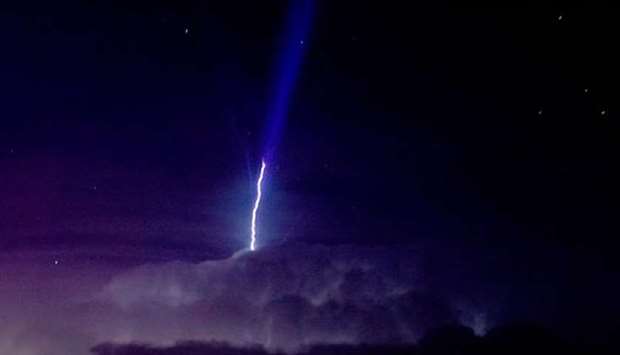The European Space Agency announced the launch of a new Atmosphere-Space Interactions Monitor (ASIM) to monitor the strange electrical phenomena that occur in thunderstorms by installing surveillance cameras and x-ray detectors.
This is known as Transient Luminous Events (TLEs), which are light columns of strange colours that appear in passing and disappear quickly, and were first discovered by chance in 1989.
This discovery was made by the Professor of Minnesota ‘John R. Winkler,’ who was testing a television camera in preparation for a space rocket. He discovered that the camera had seen two bright light poles over a distant cloud.
The phenomenon of sprites of the electric field, which has been called a phenomenon of sprites, occurs when the atmosphere becomes thin. Twilight is a thin, reddish or greenish light in the sky, resembling the expansion of the halo of light in the ionosphere, which occurs so rapidly that it can be monitored by the human eye and lasts less than a fraction of a second.
Despite the difficulty of monitoring, ‘the phenomenon of elves can be widely recognized,’ says Dr. Martin Faulkrug from the University of Bath.
It is believed that the most common transient event occurs twice in a row.
The phenomenon of blue rays is a kind of lightning strike of the upper atmosphere or ‘upper atmosphere discharges’. ‘The rays are not well studied because they are very weak, they are not necessarily associated with lightning and are sometimes shown to be very ambiguous.’ said Dr. Martin Faulkrug.
The International Space Station orbits the Earth 4009 km, and provides us with complete information about the turbulent weather systems on Earth.
The air monitoring program will be deployed aboard the International Station later this month. (QNA)

